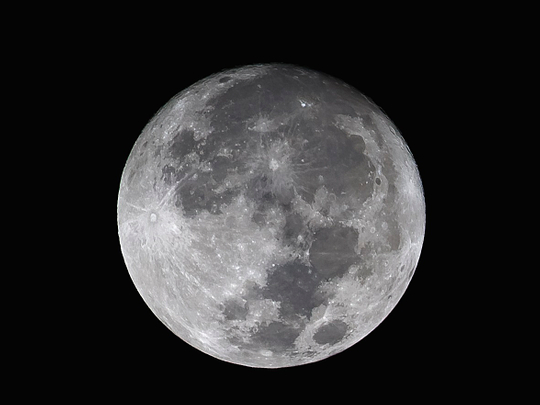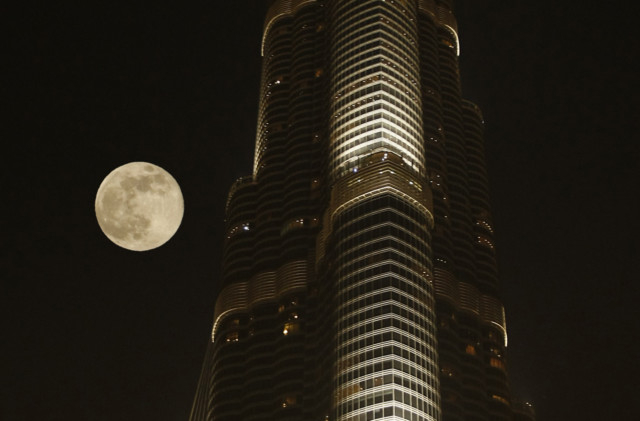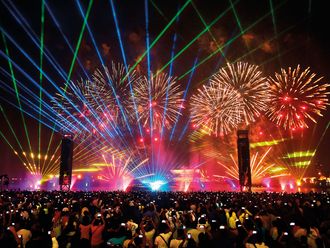
The largest Supermoon since 1948 will be visible tonight.
Supermoons occur quite frequently and this is when a full or new moon is the closest to the earth on its elliptical orbit. What makes November the 14th extra special is that this would be the largest supermoon visible in 68 years.
If you miss it tonight, NASA predict that you can catch it again on November 25, 2043.
Here’s a quick one-minute video that would help explain the phenomenon.
Read on for more facts, our recommendation on where to view it and a Supermoon party to check out too.
What’s happening?
On Monday, the moon will be the biggest and brightest it has been in about 60 years. So long as the sky is clear of clouds, it should be a great time to get outside and gaze at it or take some photos.
It’s what is commonly called a “supermoon”, or technically a “perigee full moon” — a phenomenon that occurs when a full moon coincides with the moon being the closest it gets to the Earth on its orbit.
What causes a supermoon?
The moon’s orbit around the Earth is not quite a circle but an ellipse — a kind of squashed circle.
Since the Earth is sitting off to one side of the ellipse, the moon is inevitably closer to the Earth when it passes that side, and further away as it passes the other side. When it is at the close side (called “perigee”), and it is a full moon, it’s called a supermoon.
How much bigger will it be?
At 8.09pm GMT, the moon will pass by the Earth at a distance of 356,511km — the closest it has passed the Earth since 1948. As it does so, it will be a full moon, making it a particularly big supermoon.
Supermooons are roughly 30 per cent larger in area and 30 per cent brighter than the smallest full moons — full moons that happen when the moon is at its furthest distance from Earth: at “apogee”. In terms of diameter — the width of the moon — it will be about 14 per cent wider than the smallest full moons.
How bright will it look?
While a supermoon is 30 per cent brighter than the smallest full moons, it’s only about 15 per cent brighter than an average full moon.
How big will it look?
When it comes to the size, the difference in width (diameter) between a supermoon and an average moon is about 7 per cent. When the moon is high in the sky, that difference is something you’re unlikely to notice, because the sky is big and there’s nothing to measure it against.
Why are supermoons not all the same size?
In short, the reason is that the shape of the ellipse that the moon draws around the Earth is changing all the time as it is pushed and pulled by other gravitational forces.
As a result, how stretched-out the ellipse is changes. When the supermoon coincides with a very stretched out ellipse, a supermoon is even closer (and bigger). That’s what happened in 1948 — and what will happen tonight.
When’s the best time to see it in the UAE?
While the moon will be visible all night long (well, obviously) the best time to catch it while it’s at its biggest is estimated to be around 5:52pm this evening.
Where’s the best place to check it out in the UAE?
While UAE residents will be able to see the supermoon from anywhere across the entire country, it is advisable to head out of the city, where light pollution is at a minimum. While we (together with the majority of us) would be around Al Qudra (map below), anywhere in the desert would be a good spot.
Supermoon Photography
You can capture images of the supermoon with your smartphone too. If you’re heading out tonight to snap a few pictures, check out a few supermoon photography tips from #GNTECH right here.
Bonus point: A Supermoon Party
If heading out into the desert isn’t your cup of tea, check out this Supermoon Party at The Backyard Dubai, one of Downtown’s newest venues.
Location The Backyard by Swim & Tonic, Steigenberger Hotel, Business Bay Timings 8:00pm to 3:00am Contact 04 3690000
- With inputs from The Guardian












